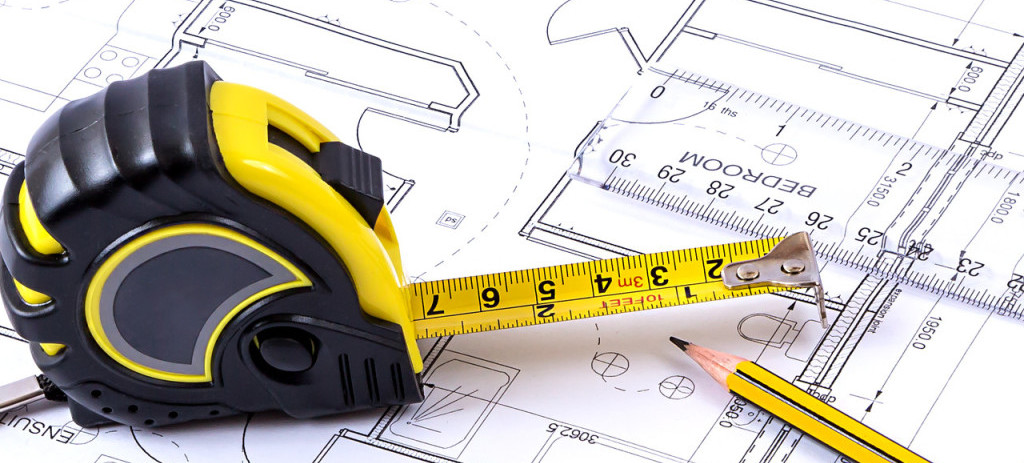Do You Really Know How to Use a Tape Measure?

You've probably seen a metal tape measure before. A stainless steel tape measure appears to be simple to use as one of the most commonly used tools. However, most people do not understand the tape measure parts and do not know how to properly read a fractional measuring tape. In this blog, we delve into the secrets behind effective tape measure use, uncovering tips, tricks, and hidden functions that elevate your measuring technique. Prepare to discover the untapped potential of your tape measure, transforming mundane measurements into a foundation for flawless execution.
What is a Tape Measure with Fractions?
As we all know, the metal tape measure is used for measuring distances, lengths, and sizes. It is made up of a long and flexible strip or ribbon of metal material with linear markings in both metric and imperial units, allowing it to be used in a variety of applications. Compared with a standard tape measure, the fractional measuring tape is also marked with fractions in addition to metric and imperial units. These fractional tape measure marks allow users to make precise measurements that fall between the whole numbers on the metal tape measure, making it especially useful in industries requiring precision, such as construction, engineering, and woodworking. 1/16, 1/8, 1/4, and 1/2 are some common fractions found on tape measures.
What Are the Different Parts of a Tape Measure?

While we're on the subject of stainless steel tape measure, let's take a closer look at how it's made. The tape measure is composed of eight parts: case, case length, spring and stop, thumb lock, blade, hook, hook slot, and belt clip.
- Case: It is like a house to protect the metal tape measure.
- Case length: A lot of tape measures have the length of the case printed on the back, which can be useful when measuring around corners.
- Spring and stop: It is generally made of 50# carbon steel and 65# manganese material.
- Thumb lock: The thumb button is located near the bottom of the case and is used to lock the tape in place or retract the tape blade back into the case.
- Blade/Tape: This is a long, flexible strip or ribbon made of metal or plastic material that contains linear measure markings in both metric and imperial units.
- Hook: The hook is the metal piece located at the end of the tape blade. It is designed to get onto the edge of an object to ensure accurate measurements.
- Hook slot: It’s designed to attach to a nail or screw. By hooking the tape measure onto a nail or screw, you can keep it steady and get accurate measurements without having to hold it in place manually.
- Belt clip: The belt clip is located on the back of the tape measure and is used to attach the tool to a belt or pocket for easy access.
4 Secrets of the Tape Measure
While a metal tape measure is commonly used for determining length, width, and height, there are hidden features or secrets that can be helpful to your project.
- The hole in the hook is used to hang the tape measure on a nail or other objects so that it doesn't require an extra hand or person to hold it in place.
- The edge of the metal tape measure hook is toothed, which allows you to draw a line if you don't have a pen handy.
- The front position of the tape measure can be moved, and the length of the first panel is shorter than the second panel to ensure accuracy when measuring an object's diameter.
- Certain measuring tapes are marked with a black diamond symbol, which is located at intervals slightly greater than 19 inches. This marking is particularly useful for construction workers, as it denotes the standard truss spacing when building a roof.
Which Tape Measure Best Fits Your Needs?

The best tape measure for you is determined by your specific needs. Here are some things to think about when choosing a stainless steel tape measure:
Length of Tape Measure
Tape measures come in a variety of lengths, including 16 feet, 25 feet, 30 feet, and 100 feet. Choose a length that is appropriate for your needs. When working on small projects, a 16-foot or 25-foot tape measure may suffice. A longer tape measure may be required for larger projects.
Material of Tape Measure
Metal or plastic tape measures are the most common. Metal tape measures are more resistant to wear and tear, but they are heavier and more expensive. Plastic tape measures are lightweight and inexpensive, but they may not last as long as metal tape measures.
Width of Tape Measure
Tape measures are available in a variety of widths ranging from 1/4 inch to 1 inch. Wider tape measures are more rigid and easier to use, but they may not fit as well as narrow tape measures in tight spaces.
Some Common Types of Tape Measure
Type | Features |
Standard tape measure | The most common type of tape measure is typically made of a flexible metal or plastic strip that can extend up to 25 feet (7.5 meters) or more. |
Long tape measure | Designed for measuring longer distances, usually up to 100 feet (30 meters) or more. |
Measuring wheel | A rolling device with a handle and a wheel that measures distance as it rolls along a surface. |
Laser tape measure | A type of tape measure uses a laser to measure distance. |
Digital tape measure | Using a digital display to show the measurement in either metric or imperial units. |
How to Use and Read a Tape Measure?

Follow these steps to use and read a tape measure:
- Pull the tape measure with 10ths out of the case until it reaches the length you require.
- Check to see if you're using the correct unit of measurement, whether it's inches, centimeters, or millimeters.
- Determine the tape measure's markings. Numbers are typically used to indicate whole inches or centimeters, while lines between the numbers indicate half or quarter increments.
- When measuring something inside a space, make sure the tape measure's hook is hooked onto one end of the object and held in place while taking the measurement.
- When measuring outside of a space, make sure the hook is against the end of the object being measured.
- For long measurements, use the locking mechanism of the tape measure to keep the tape extended without having to hold it in place.
- Finally, read the measurement where the end of the object being measured aligns with the tape measure markings.
Conclusion
The metal tape measure appears to be simple to use, but every detail must be considered when using it. If we use the tape measure correctly, we can get more precise measurements. If you are looking for professional tape measures for bulk wholesale orders, you can also find one tape measure from our whole range of tape measures on our platform. contact our professional suppliers here and start up your successful business project.


